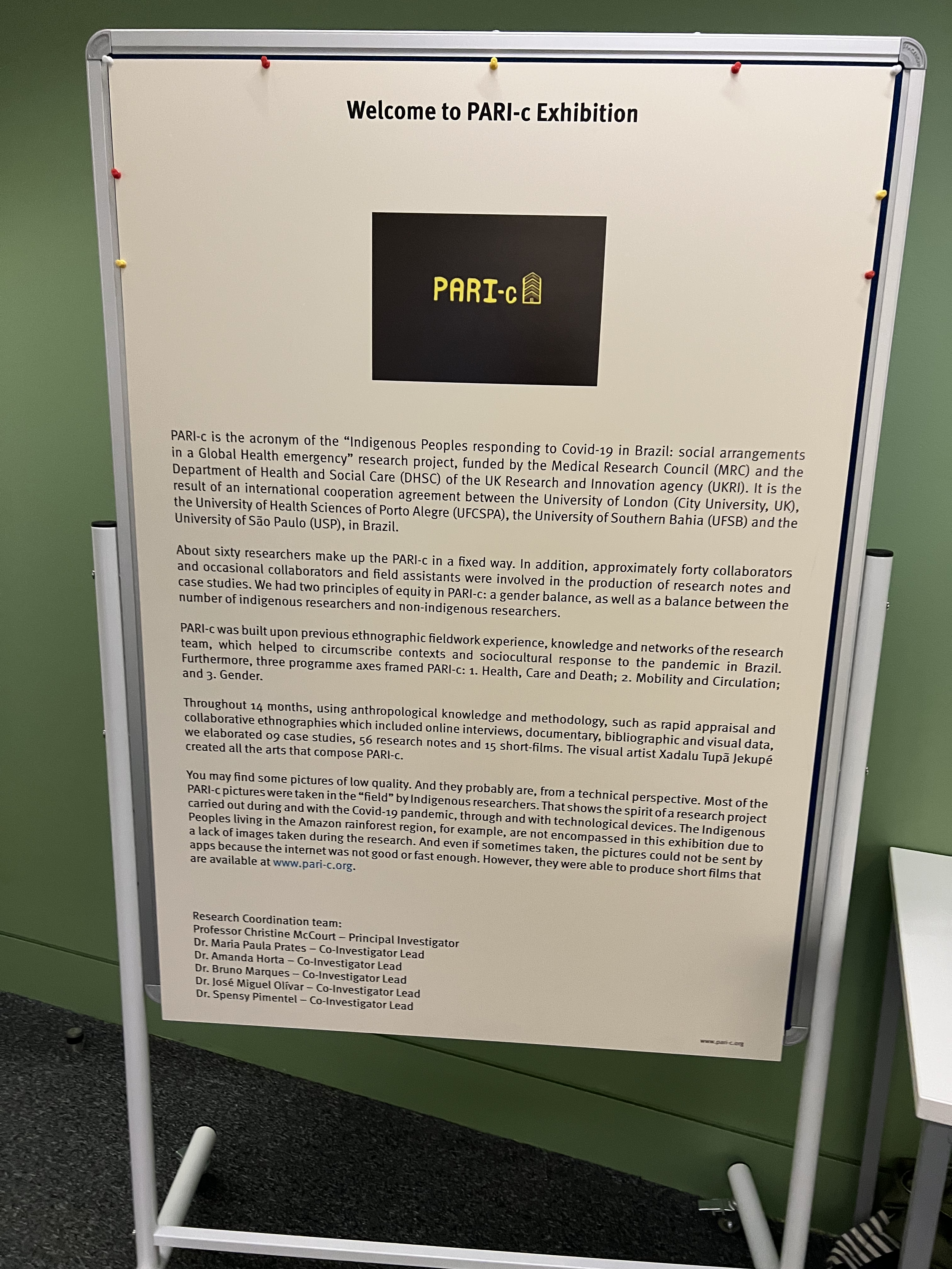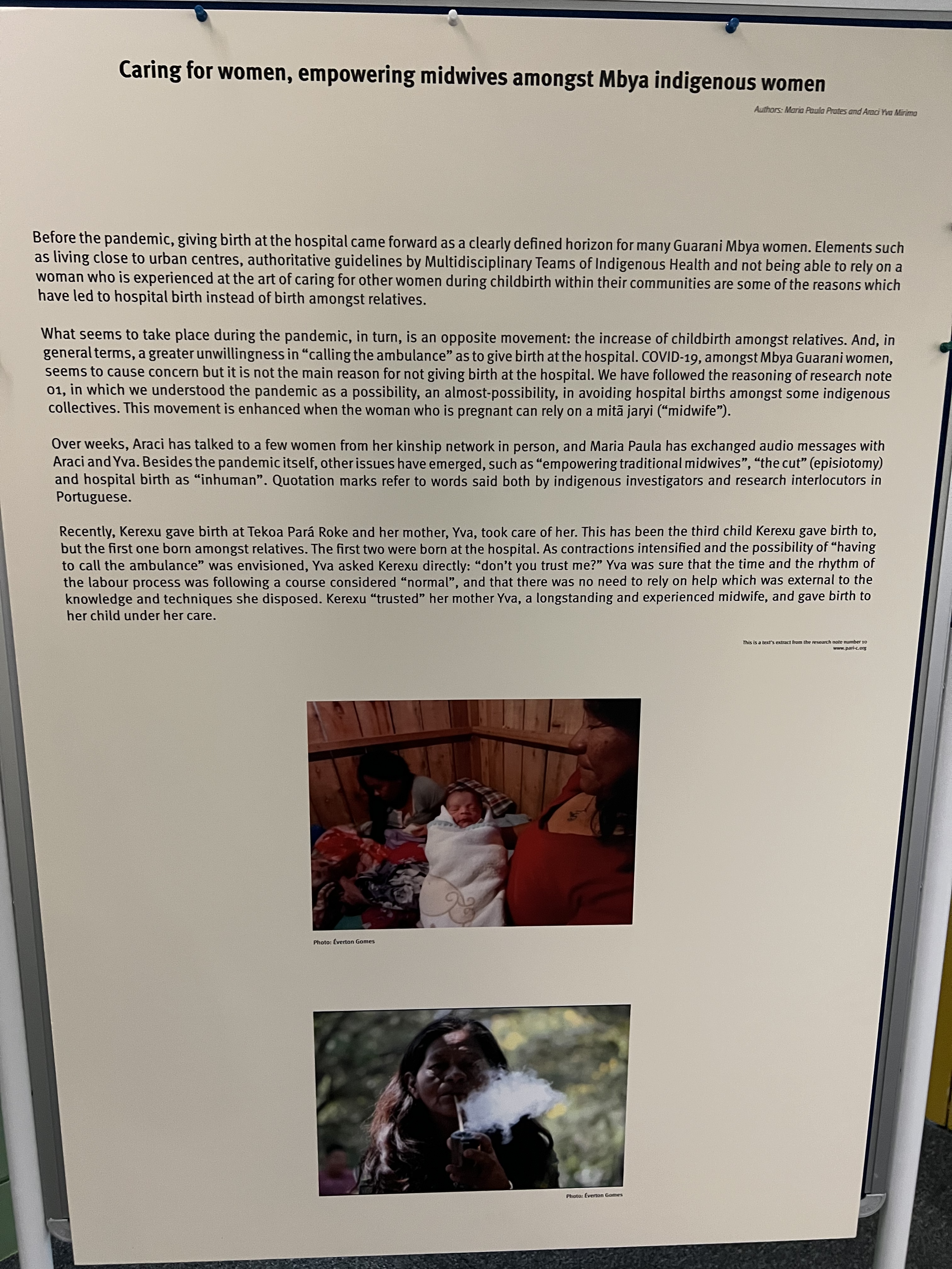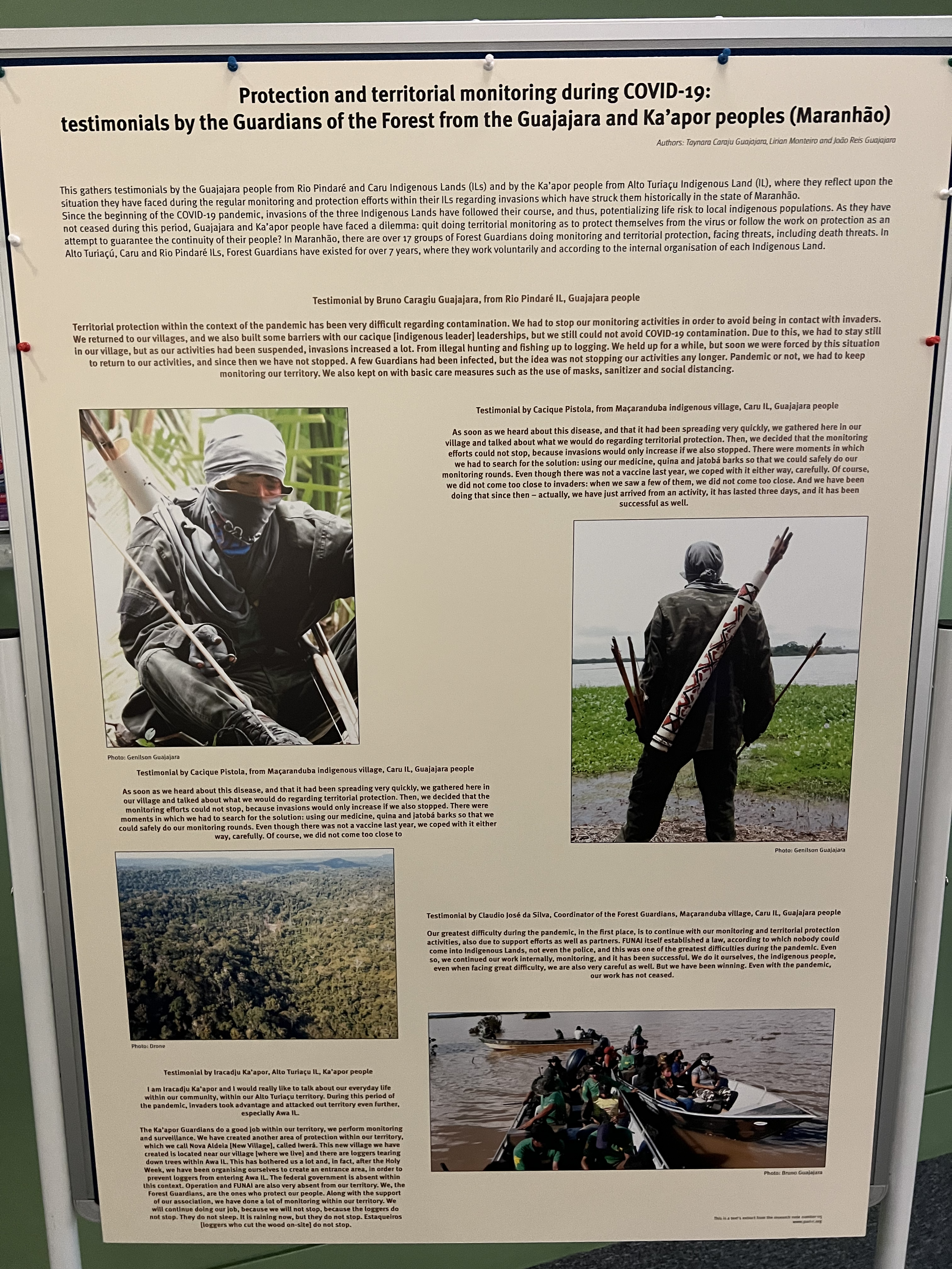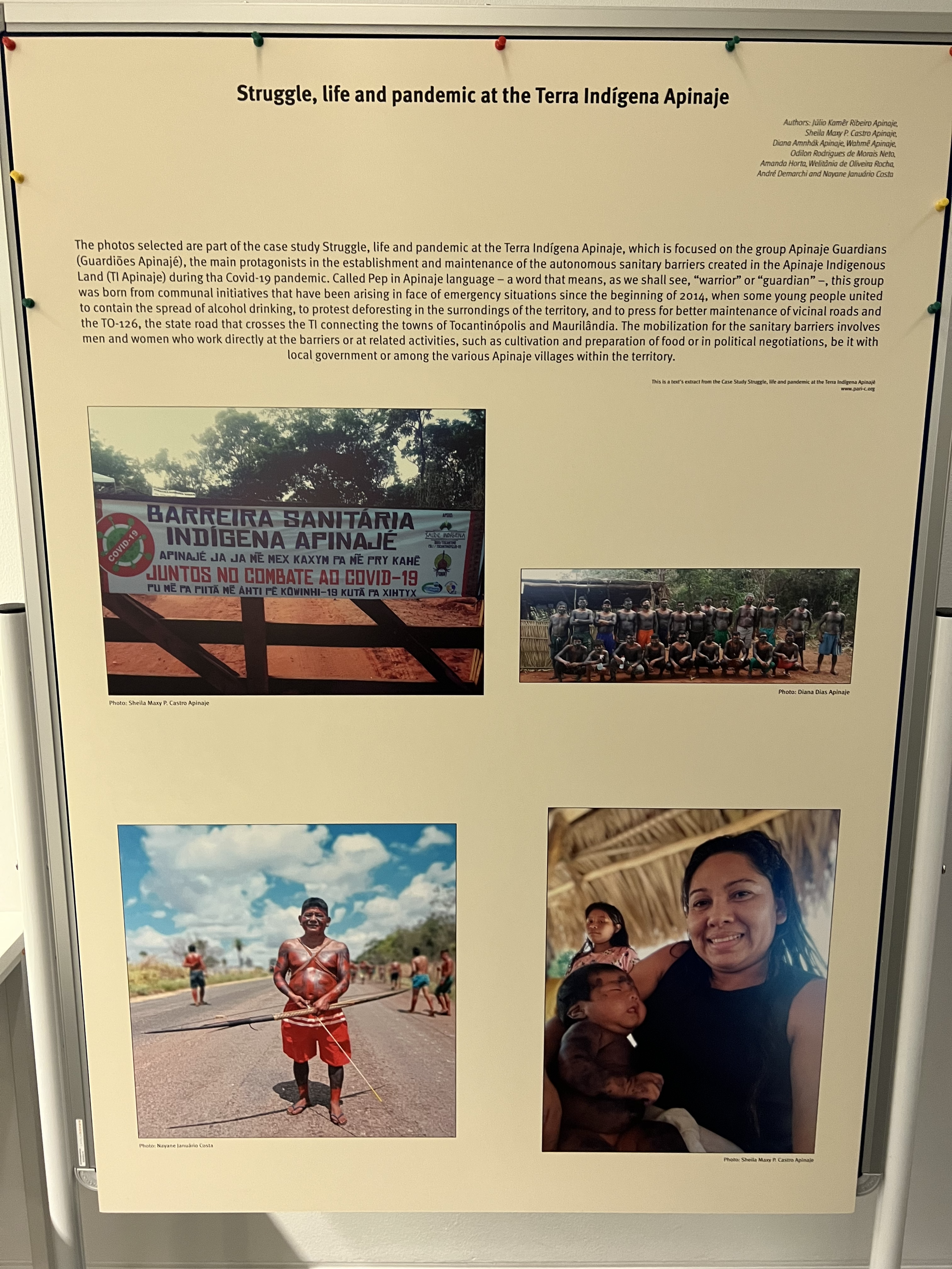Simultaneous interpreting without a booth (it’s possible!)
A few weeks ago I interpreted at an exhibition at London City University for a very interesting project called PARI-c (Plataforma Plataforma de Antropologia e Respostas Indígenas à COVID-19).
We had the honour of screening a short film and hearing first hand from the film-maker Ariel Ortega himself about what fighting COVID-19 was like for Brazilian indigenous peoples, more specifically about women and their pregnancies.
I was the one in charge of helping participants bridge the language gap.





The initial idea was for me to interpret consecutively, but I was well-aware that this would take away a lot of the spontaneity of the talk. The setting and style were very much not conducive for consecutive interpreting. Why? Because it was all very relaxed and even though there were presentations, they were not strictly structured and people were there for the very personal, intimate feel of the event.
On the occasion, we did not have an interpreting booth either, but it turned out with the help of special equipment I still managed to interpret simultaneously in whispered mode for multiple people at the same time.
It gave me a lot of joy to gauge their reactions and see they were following the train of thoughts of the speakers in real time whilst I whispered the words being said in a quiet voice:
The interpreter can easily stay in a quiet corner and not necessarily be with the speaker all the time.
The atmosphere was very relaxed as well and they seemed to not even remember I was there at times.
Q&A session with equipment: the parties spoke the language of their choice in real-time and others could choose which to hear Portuguese or English without interruptions or breaks.
I did have a moment of nervousness though, I confess. At one point, a British midwife asked about the herbs shown in a bathing ritual shown in the film we’d just watched. The second the question popped up, I swear, every Brazilian attendee looked at me probably curious to know the English translation for the possible words that would come up in a second, whatever they might be. For a split second, I thought, “oh no!” But luckily enough, I knew it. Otherwise, I would have probably directed participants to come speak to me once the talk was over and I had more than half a millisecond to figure that out. (Simultaneous interpreting involves constant effective decision-making!).
A few tips for events like this:
A tour guide set is always an excellent option, and it is much better than using consecutive interpreting. Interpreting consecutively means people might feel shy, or struggle to keep their train of thought and the audience could get disengaged. With equipment, the interpreter can whisper on the microphone of their headset and participants can take in the speakers’ reactions, facial expressions and emotions as they occur.
Always consider whether you need one or two languages . All headsets can be programmed for multiple channels, but some are made to be switched more easily. The channels are basically what people hear, so if you will be interpreting to aa bilingual conversation, it is advisable to hire a set that allows to switch easily so that people do not have to putting on and taking off the headset all the time.
Make it as easy as possible. I always like to make attendees’ lives easy, as I know that if they have told to press a button or mess with the settings in any way, someone will get lost and I might not be able to help. I always turn everything on, set the right channel for the language they need, and tell them not to turn them off (so I have them fully charged in advanced) or do anything with them.
Choose a strategic position for the interpreter. The interpreter should be as unobtrusive as possible. Ideally, sighted interpreters benefit from seeing people’s faces as we can read their lips and the emotion in their expressions. We should also be placed somewhere out of the way, which means we do not need to be on the stage or next to the speaker, but we need to hear clearly.
Interpreting equipment is indeed a gamer changer.


